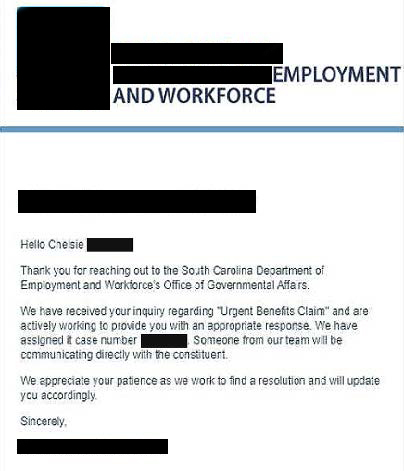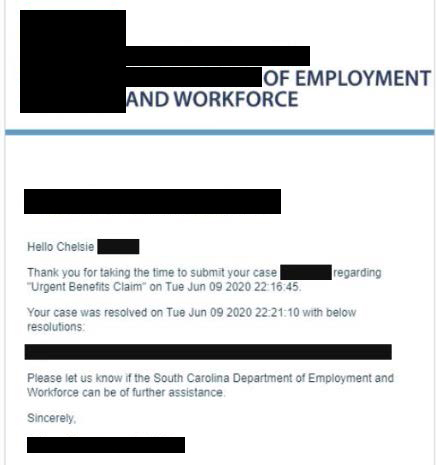Millions of Americans are out of work amid the COVID-19 pandemic. In response to job losses throughout South Carolina, the State’s Department of Employment and Workforce (DEW) sought a case management solution to manage unemployment inquiries about claims and benefits asked via email.
The Problem
Previously, DEW managed inquiries strictly through a Microsoft Outlook inbox, to which twelve employees had access. As the COVID-19 pandemic intensified, this inbox received over 1,000 inquiries a day, and many unfortunately went unaddressed as the inbox could not support the volume of responses. In this legacy inbox, the only way for the employees to confirm if an inquiry was addressed was through the read receipt or if they contacted their team manually via Microsoft’s internal instant messaging chat.
As more South Carolinians were out of work, DEW knew change was necessary to support its constituents.
The Solution
In response, Catalyst launched a Salesforce case management solution to support DEW staff with centralizing constituent unemployment inquiries and claims. With Salesforce serving as the source of truth for email inquiries, DEW staff can now effectively respond to all constituent concerns in a timely fashion. Among these outreach categories are: Appeals Inquiry, Checking Claim Status, Collections, Employer Inquiry, Issue on Claim, Overpayment Issue, and Reporting of Fraud.
Success with Salesforce Service Cloud
The email-to-case management solution for DEW is built on Salesforce Service Cloud, and our team created a forwarding rule from this inbox that automatically routes correspondence into Salesforce and creates a case. To ensure the case indeed lands in a customer support agent’s hands, the Salesforce system is configured with a “round robin.” That is, it will automatically assign cases to agents, ensuring they are evenly distributed so no one resource is inundated with cases.
There are a series of checks the case undergoes upon its receipt in Service Cloud, as facilitated by case escalation and automated notifications to confirm it receives the most timely and satisfactory attention.

The case undergoes a manual QA “spot-check” by its assigned agent to ensure the newly-created record warrants a response and is not a spam message.
If the case passes the QA check and is marked as warranting follow-up from its assigned agent, the Salesforce solution will automatically send a “confirmation of receipt” email to the constituent so they can rest assured knowing their concerns are heard. (Left screenshot)
The agent assigns either a “high” or “urgent” priority level depending on the request or inquiry.

If assigned “urgent,” the case’s status must be set from “new” to “in progress” within one hour of being assigned this status. Otherwise, a series of notifications are sent to internal stakeholders to ensure these matters get taken care of immediately to prevent service level agreement (SLA) breach.
Finally, upon resolving the problem, the agent can send a resolution email to the constituent and leverage one of the DEW-branded email templates our team built for them. (Right screenshot.)
With Salesforce serving as the source-of-truth, the team at DEW can pull reports and dashboards more quickly than before. Using the legacy inbox, all data was pulled manually and housed in a series of Excel spreadsheets. Salesforce now allows for the intuitive creation of reports and dashboards on all data within the system, and DEW administrators can even schedule these metrics to send every morning to stakeholders’ inboxes for an assessment of personnel performance, the types of cases coming in, and how long it takes for staff to resolve them.
Getting Off the Ground Quickly
Supporting those who have been laid off is a critical part of any holistic emergency response. We’ve been able to expedite our project delivery for DEW by leveraging the architecture of the Salesforce emergency case management solution we built for accelerateSC, the COVID-19 response plan spearheaded by South Carolina Governor Henry McMaster, through which constituents can submit COVID-19 related inquiries and requests for emergency support.
In all, we deployed the Agency’s solution in two weeks and leveraged an additional two weeks for ongoing enhancements post go-live.
Impact and Results
Cases are currently being closed in under two business days, providing resolution to constituents’ unemployment inquiries more quickly than in the legacy system.